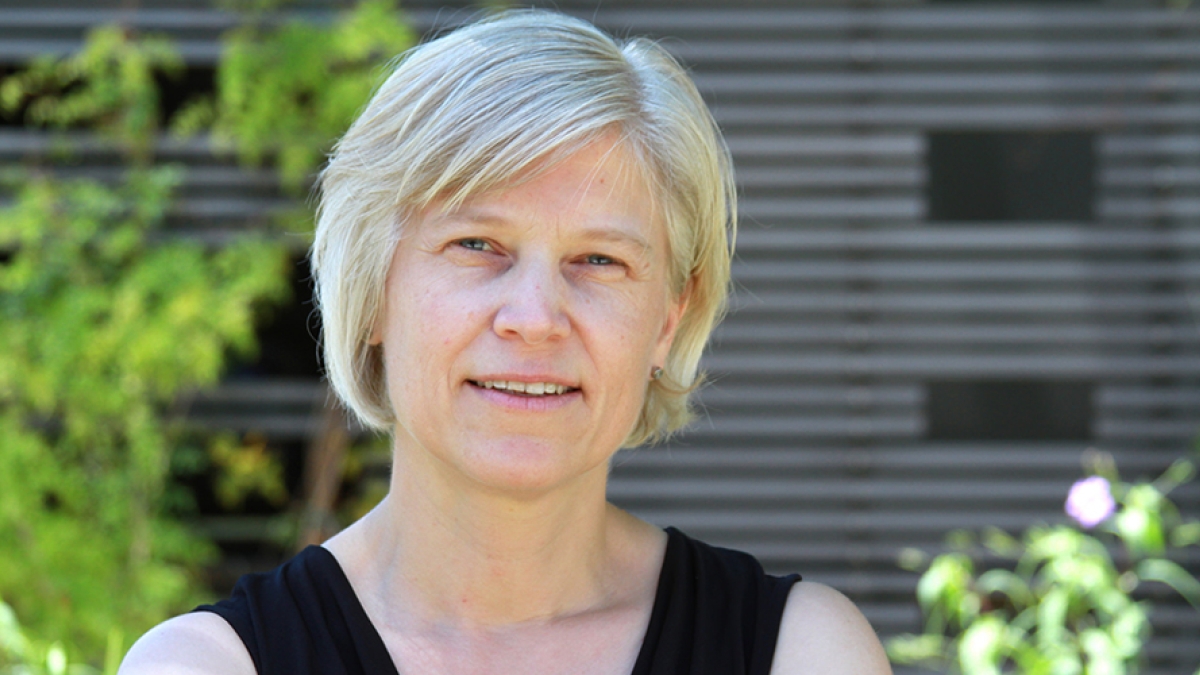ASU School of Molecular Sciences professor receives Innovation Award

Alexandra Ros, associate professor in ASU’s School of Molecular Sciences and the Center for Applied Structural Discovery in the Biodesign Institute, has just won the Federation of Analytical Chemistry and Spectroscopy Societies (FACSS) Innovation Award.
Arizona State University's Alexandra Ros has received the Federation of Analytical Chemistry and Spectroscopy Societies Innovation Award for her paper and presentation, “Electrically Triggered Water-in-Oil Droplets for Serial Femtosecond Crystallography.”
The award is given to the most innovative research debuted orally at the annual SciX Conference. Four candidates are selected each year by a scientific committee to present a talk in a special session. Each presenter discusses his or her contribution with the audience and the judging committee after the presentation. Judges are asked to consider innovation, novelty, impact, creativity, transformative potential and technical merit.
Ros, who is an associate professor in ASU’s School of Molecular Sciences, has developed a unique method for reducing sample size as well as waste (which can be as high as 99 percent) in her team’s Serial Femtosecond Crystallography (SFX) with X-ray Free Electron Laser (XFEL) experiments.
SFX is a promising new technique for protein structure determination, where a liquid stream containing protein crystals is intersected with a high-intensity XFEL beam that is a billion times brighter than traditional synchrotron X-ray sources.
While the crystals diffract and immediately after are destroyed by the intense XFEL beam, the resulting diffraction patterns can be recorded with state-of-the-art detectors. Powerful new data analysis methods have been developed, allowing a team to analyze these diffraction patterns and obtain electron density maps and detailed structural information of proteins.
The method is specifically appealing for hard-to-crystallize proteins, such as membrane proteins, as it yields high-resolution structural information from small micro- or nanocrystals, thus reducing the contribution of crystal defects and avoiding tedious (if not impossible) growth of large crystals as is required in traditional synchrotron based crystallography.
Ros and her team have developed a microfluidic device, which is high-resolution, 3D-printed and generates aqueous–in-oil droplets synchronized to the free electron laser pulses.
All currently available XFELs are pulsed and since the protein suspensions are typically injected in a continuous flow, sample injected in-between the XFEL’s pulses is wasted. For example, this can lead to up to 99 percent of sample wasted at the European XFEL and would require about 1 gram of purified protein for full data set recording.
The researcher’s novel approach interleaves sample-laden liquid “slugs” within a sacrificial liquid, so that a fast-moving liquid microjet is maintained with sample present only during exposure to the femtosecond XFEL pulses (one millionth of one billionth of a second in duration).
“This is a unique opportunity to compete scientifically against peers of all other disciplines in the analytical chemistry field," Ros said. "I was very excited to have been selected to present our latest research related to serial femtosecond crystallography in the finalist presentation at SciX and am even more excited to have received the recognition. All this would not be possible without a great team of students and collaborators.”
More Science and technology

ASU-led space telescope is ready to fly
The Star Planet Activity Research CubeSat, or SPARCS, a small space telescope that will monitor the flares and sunspot activity…

ASU at the heart of the state's revitalized microelectronics industry
A stronger local economy, more reliable technology, and a future where our computers and devices do the impossible: that’s the…

Breakthrough copper alloy achieves unprecedented high-temperature performance
A team of researchers from Arizona State University, the U.S. Army Research Laboratory, Lehigh University and Louisiana State…

